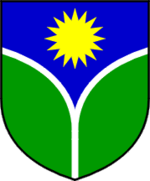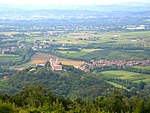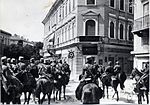Vrtojba
Italy–Slovenia border crossingsPages with Slovene IPAPopulated places in the Municipality of Šempeter-Vrtojba
Vrtojba (pronounced [ʋəɾˈtoːi̯ba]; Italian: Vertoiba) is a settlement in the Municipality of Šempeter-Vrtojba in the Slovene Littoral region of Slovenia. A border crossing into Italy is located here. On the Italian side of the border, opposite Vrtojba, is the suburb of San Andrea (Slovene: Štandrež), now part of the town of Gorizia (Slovene: Gorica).
Excerpt from the Wikipedia article Vrtojba (License: CC BY-SA 3.0, Authors).Vrtojba
Ulica Zapučke, Šempeter-Vrtojba
Geographical coordinates (GPS) Address Nearby Places Show on map
Geographical coordinates (GPS)
| Latitude | Longitude |
|---|---|
| N 45.908922222222 ° | E 13.636394444444 ° |
Address
Ulica Zapučke 23
5290 Šempeter-Vrtojba
Slovenia
Open on Google Maps








